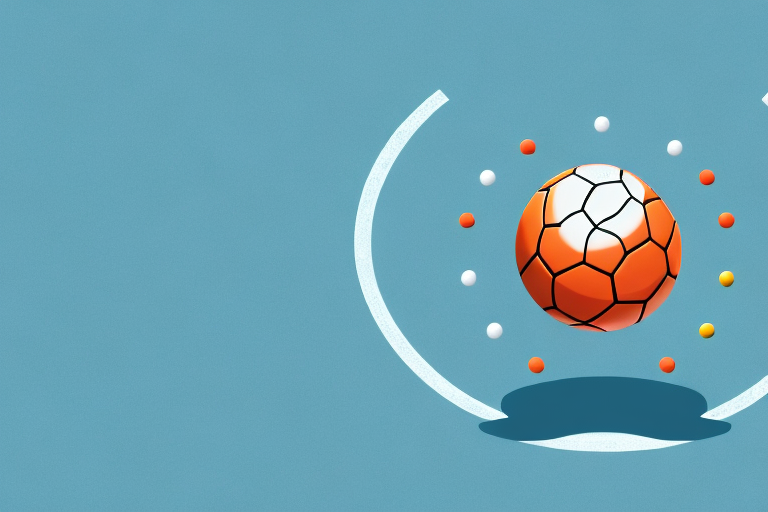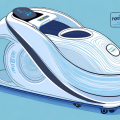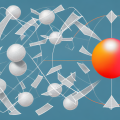For athletes and fitness enthusiasts, the quest for improved performance is a constant one. From nutrition to training techniques, everything revolves around achieving better results. However, one aspect of performance improvement that often goes overlooked is muscle recovery. That is where sports trigger point balls come in. In this article, we will explore the science behind trigger point therapy and how using a sports trigger point ball can help improve performance.
What is a Sports Trigger Point Ball?
A sports trigger point ball is a small, lightweight ball that is used in self-massage techniques to help relieve muscle tension and soreness. It is designed to target specific trigger points or knots in your muscles, which can be caused by a buildup of lactic acid, lack of hydration, or overuse. By applying pressure to these trigger points, you can release the tension and restore blood flow to the area, which can help speed up the recovery process.
Using a sports trigger point ball can also help improve your range of motion and flexibility. By releasing tension in your muscles, you may find that you are able to move more freely and with less pain. Additionally, incorporating a sports trigger point ball into your regular exercise routine can help prevent future injuries by keeping your muscles loose and healthy. It is important to use proper technique when using a sports trigger point ball, and to consult with a healthcare professional if you have any concerns or underlying medical conditions.
The Science Behind Trigger Point Therapy
The science behind trigger point therapy is based on the idea that muscle tension and pain can be caused by trigger points, which are small, hyper-irritable spots in the muscle tissue. These spots can cause referred pain, which is pain that is felt in other parts of the body. For example, a trigger point in your shoulder could cause pain in your neck or arm.
Trigger point therapy involves applying pressure to these spots to release the tension and promote healing. One way to do this is through manual massage, but this can be time-consuming and may require the assistance of a professional. Alternatively, you can use a sports trigger point ball to target these areas yourself, allowing you to customize the intensity and duration of the massage.
Research has shown that trigger point therapy can be effective in reducing pain and improving range of motion in individuals with various conditions, including fibromyalgia, tension headaches, and low back pain. In addition, regular trigger point therapy can help prevent the development of new trigger points and reduce the likelihood of future pain and discomfort.
How Using a Sports Trigger Point Ball Can Improve Performance
By incorporating trigger point therapy into your recovery routine, you can improve your performance in a number of ways. First and foremost, it can help reduce muscle soreness and tension, which can lead to improved range of motion and flexibility. This, in turn, can help prevent injuries and improve overall athletic performance.
Additionally, by promoting blood flow to the affected areas, trigger point therapy can help speed up the recovery process and reduce downtime between workouts. This allows you to train more frequently and at a higher intensity, which can lead to faster gains in strength and endurance.
Using a sports trigger point ball can be an effective way to incorporate trigger point therapy into your recovery routine. The ball can be used to target specific areas of tension and soreness, allowing you to apply pressure and release knots in the muscles. This targeted approach can be more effective than general stretching or massage, as it allows you to focus on the areas that need the most attention.
Targeting Specific Muscle Groups with a Trigger Point Ball
To get the most out of your sports trigger point ball, it is important to target specific muscle groups that are prone to tension and soreness. For example, the upper back and neck are common areas of tension for those who spend a lot of time sitting in front of a computer. Likewise, the hamstrings and calves can become sore and tight after a long run or bike ride.
To target these areas, simply place the ball on the muscle and use your body weight to apply pressure. You can roll the ball around or hold it in one spot for a deeper massage. Start with light pressure and gradually increase as needed.
It is also important to note that trigger point balls can be used to target smaller, more specific muscle groups. For example, the muscles in the feet and hands can benefit from trigger point therapy, especially for those who spend a lot of time on their feet or using their hands for repetitive tasks. By targeting these smaller muscle groups, you can improve overall mobility and reduce the risk of injury.
Benefits of Incorporating Trigger Point Therapy into Your Training Routine
Incorporating trigger point therapy into your training routine can have numerous benefits beyond improved performance. For one, it can help reduce stress and promote relaxation, which can have a positive impact on your overall well-being. It can also improve sleep quality, which is essential for proper recovery and muscle growth.
Additionally, trigger point therapy can help prevent chronic pain and injuries by addressing minor issues before they become more serious. It can also improve your posture and reduce muscle imbalances, which can lead to better form and technique during exercise.
How to Properly Use a Sports Trigger Point Ball for Maximum Results
To get the most out of your sports trigger point ball, it is important to use it correctly. Start by identifying the areas of tension in your body and focus on those first. Use light pressure at first and gradually increase as needed, taking care not to apply too much pressure, which can be painful.
When using the ball, it is important to breathe deeply and relax your muscles as much as possible. This will help the ball penetrate deeper into the muscle tissue and promote relaxation. You can perform trigger point therapy before or after a workout, but it is important to listen to your body and avoid overdoing it.
Common Mistakes to Avoid When Using a Trigger Point Ball
While trigger point therapy can be incredibly effective, there are a few common mistakes to avoid. For one, it is important to avoid rolling the ball over bony areas, as this can be painful and ineffective. Additionally, it is important to stay hydrated and stretch properly before and after using the ball, as this can help prevent injury.
Combining Trigger Point Therapy with Other Recovery Techniques
While trigger point therapy can be incredibly effective on its own, it is even more powerful when combined with other recovery techniques. For example, you may want to incorporate foam rolling, stretching, and massage into your recovery routine in addition to trigger point therapy. This can help ensure that all areas of tension are addressed and promote overall muscle health.
Choosing the Right Sports Trigger Point Ball for Your Needs
When choosing a sports trigger point ball, it is important to consider your specific needs and preferences. For example, if you have sensitive skin or are prone to bruising, you may want to choose a softer ball. Conversely, if you prefer a deeper massage, a firmer ball may be more effective.
Ultimately, the key is to find a ball that feels comfortable and meets your specific needs. With consistent use, a sports trigger point ball can be an incredibly effective tool for improving performance, reducing soreness and tension, and promoting overall muscle health.





